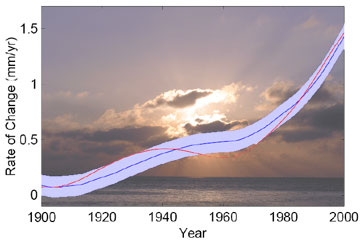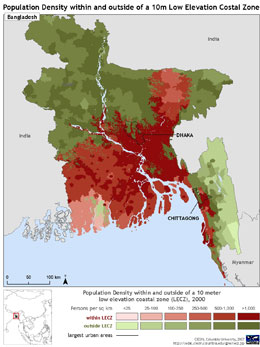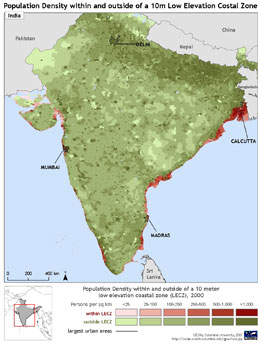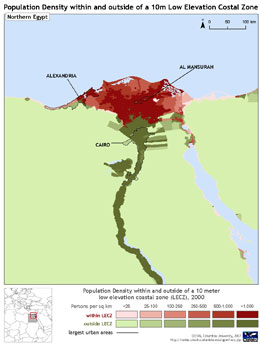Hundreds of millions at risk from rising sea levels
Hundreds of millions at risk from rising sea levels
mongabay.com
March 27, 2007
Hundreds of millions are at risk from cyclones and rising seas resulting from climate change reports a new study by researchers from the International Institute for Environment and Development (IIED) in the UK, the City University of New York, and Columbia University.
The research shows that nearly two-thirds of cities with more than 5 million inhabitants lie at least partially within just ten meters above sea level. In total, about 634 million people live in within this risk zone.
“One in ten people, and one out of every eight urban dwellers, live on the coast no more than ten metres above sea level, but that number is increasing,” said Gordon McGranahan of IIED. “People are running towards risk, particularly in China but also in other parts of the world such as Bangladesh, where more 40% of the land area is within ten metres above sea level.”

Rate of sea level rise computed directly from the climate model simulation published in February in the journal Science. Click to enlarge.
Population density inside and outside the 10 meters of elevation risk zone. Images courtesy of Columbia University’s Center for International Earth Science Information Network |
“Of the more than 180 countries with population in the low-elevation coastal zone, 130 of them – about 70% – have their largest urban area extending into that zone,” added Bridget Anderson, research associate at Columbia University’s Center for International Earth Science Information Network. “Furthermore, the world’s large cities – those ith more than 5 million residents – have, on average, one-fifth of their population and one-sixth of their land area within this coastal zone.”
The report notes that the ten countries with the largest number of people living within ten meters of the average sea level are: China (143,888,000); India (63,188,000);
Bangladesh (62,524,000); Vietnam (43,051,000); Indonesia (41,610,000); Japan (30,477,000); Egypt (25,655,000); United States (22,859,000); Thailand (16,468,000); and the Philippines (13,329,000).
Men while the countries with the most vulnerable populations, or the largest share of their population living within ten meters of the average sea level are: Bahamas (88%); Suriname (76%); Netherlands (74%); Vietnam (55%); Guyana (55%); Bangladesh (46%); Djibouti (41%); Belize (40%); Egypt (38%); and the Gambia (38%).
Many of these countries are poor are least capable of coping with disasters, says the report.
“Climate change is not a natural disaster but has largely been caused by wealthy countries emitting greenhouse gases during their industrialisation,” said McGranahan. “Yet the poorest countries that have contributed least to the problem are most vulnerable to its effects. It is therefore incumbent on rich nations to help poorer ones to adapt to the changes ahead.”
The authors say that efforts to prevent large-scale damage and suffering should focus on “the three Ms”: mitigation, migration and modification.
“It is too late to rely solely on a reduction in greenhouse gas emissions to mitigate climate change, although this is clearly an imperative,” said McGranahan. “Migration away from the zone at risk will be necessary but costly and hard to implement, so coastal settlements will also need to be modified to protect residents.”
The paper, to be published next month in the journal Environment and Urbanization was based on analysis of GRUMP (Global Rural-Urban Mapping Project) population databases along with elevation data derived from NASA’s Satellite Radar Topography Mission, and World Bank data on national income. In addition to McGranahan and Anderson, Deborah Balk, the acting associate director of the Institute for Demographic Research at the City University of New York, was also a co-author of the study.
The paper is available at the International Institute for Environment and Development web site
This article is based on press materials from the International Institute for Environment and Development


















